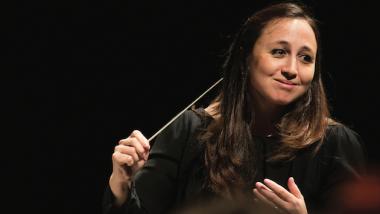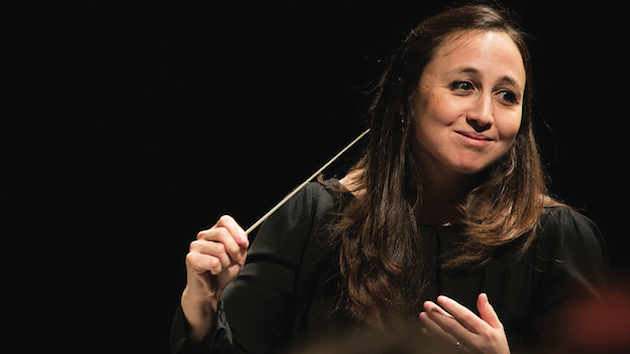
Upon hearing a well-known work by a famous composer, it can be hard to conceive of that composer as a mere mortal, a humble human who — just like the rest of us — simply stood up and started from somewhere. On Thursday and Friday and in Berkeley and San Francisco respectively, the Berkeley Symphony opened its 2017–2018 season with a program of beautiful beginnings. They included the return of the Symphony’s piercingly gifted director, Joana Carneiro, a performance of Beethoven’s Symphony No. 1, and a premiere by William Gardiner that was commissioned by a Berkeley-based non-beginner currently celebrating his 70th, John Adams.
When people talk about Beethoven’s symphonies, they typically speak of his Third, Fifth, and Ninth, and for good reasons. But before all those, Beethoven was an ambitious barely-30-something who necessarily also wrote a First. A few decades ago, his first symphony was the first piece that Carneiro ever conducted. Following her uniquely valid and gracefully dignified lead while listening to Beethoven’s earliest symphony in the intimate Hume Hall at San Francisco Conservatory of Music felt a bit like listening to the same piece surrounded by high-quality speakers in one’s own living room after a long workday, except amped up with a welcome, sweaty overdose of throbbing, real-life humanity.
Beethoven famously dealt with deafness because he believed in himself. That’s inspirational precisely because it’s basically unfathomable: We need others to believe in us and to prop us up. Through their Pacific Harmony Foundation, John Adams and Debbie O’Grady commissioned William Gardiner’s first foray into the realm of cello concertos. Gardiner wrote his piece specifically for a Berkeley-born cellist, Tessa Seymour.
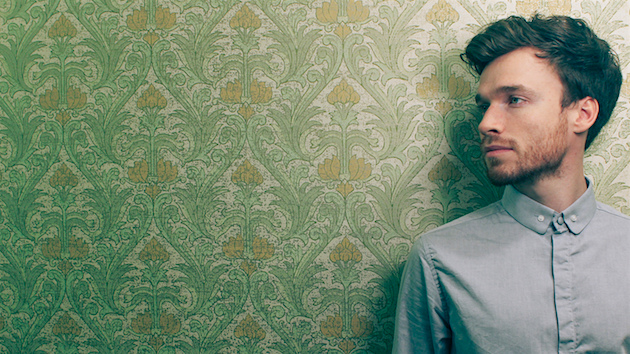
Gardiner’s Concerto is in two movements and is based on two musical ideas: “A fluttering figure that falls down and comes back up, and two notes separated by a great vertical distance.” Especially in the small space, Seymour’s fierce concentration and the raw physicality of her playing were both palpable and penetrating.
The whole work opened with pizzicato strings and a woodblock plunking as unpredictably as life itself. The start of the second movement opened with a gorgeous solo line that sounded like an assured and necessary exhale after the entire first movement, an episode that Gardiner compares to an airplane suddenly dropping due to turbulence. The woodblock returned at the work’s end like the morning’s memory of a nightmare.
Most people are not Beethoven or Gardiner, and thus their first attempts in a new genre don’t sound like this. Meanwhile, the audience appreciated Seymour so much that she played an encore in the middle of the program: Giovanni Sollima’s Lamentatio. With a vaguely middle-eastern flair, the piece combines singing with impassioned playing. The complex and intriguing Seymour seems like a contemporary, feminine incarnation of what I imagine the enigmatic Paganini once was.
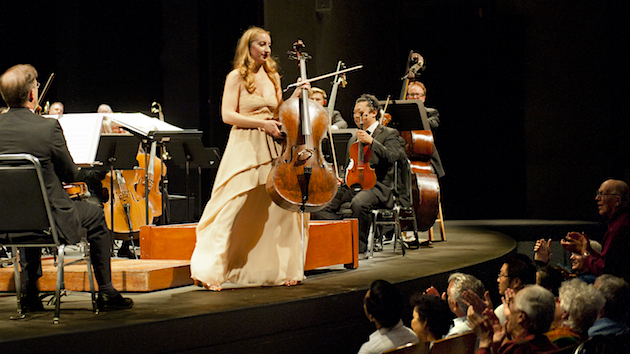
After the relentless intensity of the first three pieces, Shostakovich’s first Jazz Suite (1934) injected a little levity. This cheeky suite, scored for chamber ensemble, spans three short movements. Michael Taddei, Berkeley Symphony’s principal bass, was characteristically captivating and charismatic throughout all three.
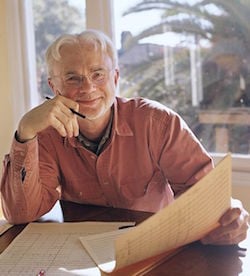
It’s hard to imagine that a piece written in 1988 can sound, as the program notes put it, “vintage.” But especially in the Bay Area, it’s sufficient to say that Fearful Symmetries is quintessentially John Adams — who, along with Gardiner, was in attendance on Friday. The arresting section breaks in this huge and sometimes hypnotic piece startle like when a dozing, heavy head nods down just a tad too far. The synthesizer part intimidates — it sounds like something humans might do well fully to outsource to machines. But Marc Shapiro totally handled it, apparently undaunted. Near the end of the whole work, there is a section sonically akin to firefly-twinkling at twilight, during which time the Matchbox Twenty song “Let’s See How Far We’ve Come” popped into my head.
In several ways, this program was about beginnings, renewals, debuts, premieres. But none of them were of the mundane sort, like when fallible babies take first steps, stumble, fall, cry, laugh, and try again. These beginnings were different and uncommon — mature and amplified like the content of myths, Berkeley Symphony’s season opener sounded like Athena springing fully formed from the head of Zeus.

